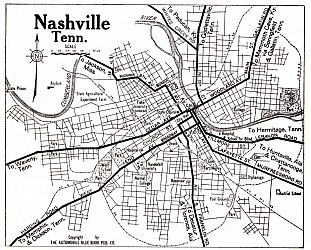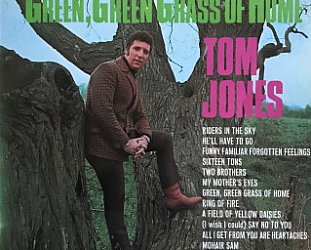Graham Reid | | 6 min read

So, here’s a poser. What’s the link between The Carpenters’ vapid saccharine pop and the abrasive guitar pop grind of Sonic Youth? The correct answer, of course, is “who cares?”
There is a link, however. In the same week as Sonic Youth’s Goo album -- which includes Tunic (Song For Karen) – was released here The Carpenters’ Greatest Hits was topping our charts.
“That’s no coincidence,” laughs Sonic Youth guitarist Thurston Moore. “We planned it. That’s why it took us two years between albums – we wanted to get the timing right.”
Bassist Kim Gordon has talked about the “camp aesthetic” of The Carpenters’ revival and their rediscovery by the underground scene – but surely this begs the issue. The Carpenters simply made wretchedly vacuous pop, didn’t they?
“Oh, it was crap music,” laughs Moore, “but was also extremely interesting. Her voice was so angelic it was like butterscotch and Richard used to layer it, which was a fairly radical studio technique. It gave it a super-lush feel – not unlike what My Blood Valentine are trying to do now.
“They were whitebread middle-class people and Karen was somebody who was supposed to be so perfect. It was a heavy slice of Americana, like the Walton family.
“But the music was very stirring – unlike Into The Groove, which is rubbish,” he concludes, referring to the Madonna song Sonic Youth covered as their alter-ego Ciccone Youth.
Over the years, Sonic Youth have covered a broad field of songs by other artists, from Robert Palmer to George Harrison (a magnificently dense version of Within You Without You for the Sgt Pepper Knew My Father album) to, most recently, Brian Wilson’s I Know There’s An Answer for a Wilson tribute album.
“I’ve always thought compilations were really groovy and thought it would be good to be on those – but then it got to the point of saying ‘yes’ to them all. We’ve been on so many it’s almost like an album in itself scattered out there.
“In a lot of situations, like the Sgt Pepper’s one, there is a theme involved and for that we chose Within You Without You because Harrison was the coolest Beatle – plus it was the first song on side two and we were guaranteed a good showing. And yeah, we liked the drone. We figured if anyone was going to have the drone sound it would be us.”
Moore credits the proliferation of tribute albums today to a growing awareness of the depth of rock history.
At 32, he says his parents listened to popular music of the 40s and 50s but there are people whose parents were brought up on The Beatles and The Stones – and now parents who listen to The Blue Oyster Cult and Kiss.
And if rock has become part of the establishment – not to say gentrified in the case of Phil Collins and the like – Sonic Youth can also see how what was once “alternative” is becoming part of the “mainstream.”
With their signing to the David Geffen Company it has happened to them, and Moore sees it as part of the same process which has created the tribute albums. A new generation comes through -- but in the business end.
“The major companies have seen indie and alternative music which started about 12 years ago become proven successful through companies like SST and Rough Trade.
“And the A&R people in the majors are the same age as the people running the indie labels. They are all in their late 20s or early 30s, so their sense of history is quite different from what went before.
“But they also know you can’t just pick up really weird off-the-edge underground bands – there’s no reason to anyway. The only purpose for being on a major label is if you have a lot of sales and your indie can’t deal with the number of records you should be selling.”
For Sonic Youth, theirs has been a move towards major artist status over six previous albums which began in ’81 after Moore and guitarist Lee Ranaldo began working together in Glenn Branca’s guitar orchestras in the late 70s. Their steady climb sees them now with a huge distribution machine behind them but no compromise on the music.
“They get the album we give them but they don’t own the music. We have total artistic control but we don’t exploit that by putting some nudes or something on the cover. I guess we could – but they wouldn’t distribute it, so what’s the point?”
What Sonic Youth did put on the cover of Goo was almost enough to view the Geffen art department a heart attack anyway. A stark black and white drawing which looks stuck on with tape (the effect unfortunately lost on CDs) with the band name scrawled across the top.
“They thought it looked like a bootleg and a bit of a bad move but we always wanted to use one of Ray Pettibon’s drawings because he’s one of our favourite artist. This was the right time to do it, now that we are corporate.”
The text on the drawing – “I stole my sister’s boyfriend. It was all whirlwind, heat and flash. Within a week we killed my parents and hit the road” – also caused problems. The company felt it would be hard to market in more conservative shopping areas. Moore says the band just figured the company would have to work that bit harder.
But that conservative lobby out there, epitomised by the Parents Music Resource Centre (PMRC), is a major force. Significantly the album cover also has a “Smash the PMRC” logo.
Moore acknowledges the PMRC is a powerful lobby, “but basically they are people who aren’t involved in the music or arts, so they only see things in black and white.
“That’s the sensibility they want to impose on America, which we see goes hand in hand with concepts like fascism. You have to fight it. How do you explain the notion of an artist to someone who has no inclination of that lifestyle?”
Yet Moore also doubts the wisdom of artists like Frank Zappa and Dee Snyder (of Twisted Sister) appearing before committees to testify in cases involving the PMRC.
“They’re big rock stars, but who cares? They’re looked on as freaks anyway so they’re not going to sway the moral majority who just say, ‘ah, an intellectual freak,’ and that’s it. You need someone like Springsteen who tries to represent a more working class sensibility – but he hasn’t come forward.”
Moore also concedes however, that a band like the controversial rap outfit 2 Live Crew are exploitative (“they’ve really bad musically but making a lot of money out of being lewd”) but is cautious about too much comment on them.
“It’s a very political situation with them because you’ve also got Andrew Dice Clay (a white comedian) who is very explicitly – but he’s corporate.”
Moore’s analysis of politics extends into a discussion about the Reagan years and how he saw it as a wilful drive back to the family values of the 50s at the expense of the poor and minorities, which resulted in a destruction of the social fabric of cities.
“That was another reason why we used the cover - Reagan’s return to another era which was supposedly so safe and sound. That picture is about the bad seed. It’s based on photography of teenagers who actually did kill their parents and hit the road. They are the other side of his supposedly safe era.”
And Moore says he sees the Bush administration perpetuating the myth of a better time back when. And the artist role in all this?
“What it always has been, perhaps. Documentation and comment. Because of MTV, artists have high visibility and people like Sting, Michael Stipe and Bono are talking about things the Government is not addressing. They have a forum which is huge.
“In the future there may be more crossover between artists and politicians, even though most people who get involved in the arts are people like myself who aren’t particularly articulate. We have another form of communication...”
But one that is sometimes hijacked by corporate enterprise, he says. After Jimi Hendrix, Jim Morrison and Janis Joplin died, the record companies tried to take control of youth culture and somewhere in the shadows behind that, he suspects, the Government is controlling things.
He notes that the hippies were a fairly small movement in San Francisco but exploited by the media, bought up by corporate marketeers and shipped out globally.
“But punk and hardcore, as much press as it got, was not exploited the way hippies were. Hardcore was huge but if it had been exploited it could have been massive maximum rock’n’roll – and it was totally independent of corporations.”
And with Goo – which roves from Kim Gordon talking to LL Cool J on Kool Thing (“so what are you going to do for me? Are you gonna liberate us girls from white, male, corporate oppression”) to the speed crash of Scooter and Jinx – the independents are meeting the corporate on their own terms.
As Moore says: “It’s important people know that music is a free thing and not to be dictated by anyone.”







post a comment